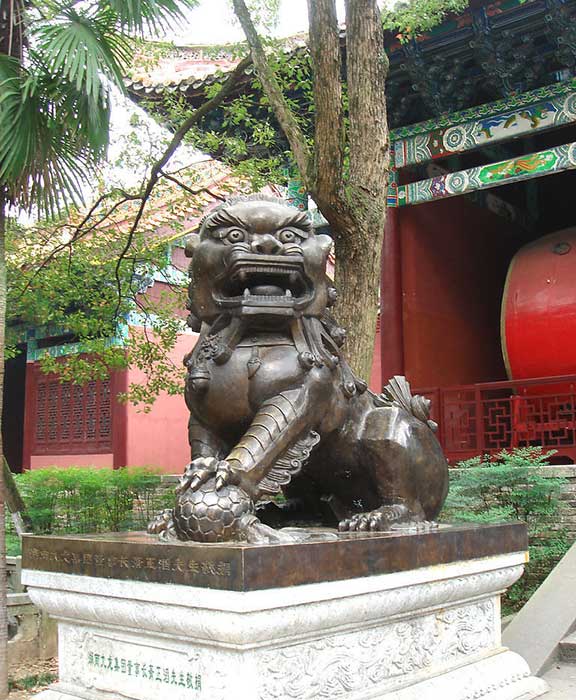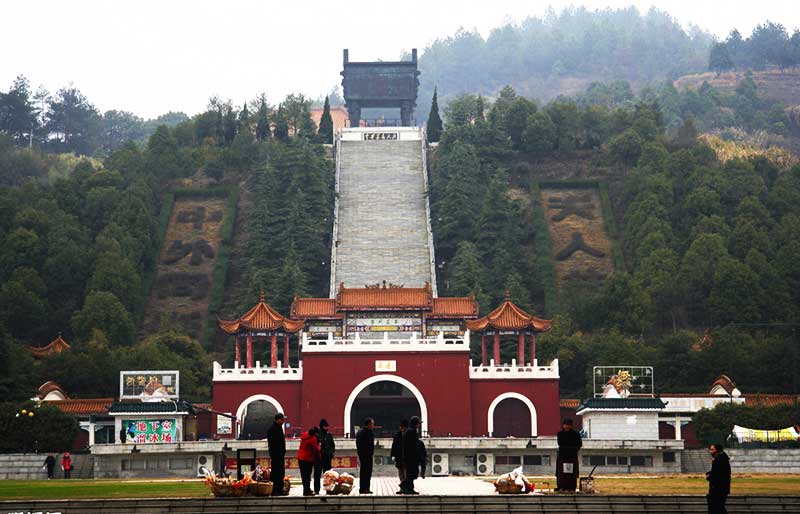Mount Hengshan – Heng Shan Mountains (Nan Yue)
As one of the famous mountains Wuyue (a collective name given to five sacred mountains in China), Mt. Hengshan is located close to Hengyang City in Hunan Province. It is also referred as Nanyue, meaning Southern Mountain. It has eminent mountain peaks and wonderful mountain scenery.
Beautiful Natural Scenery
Mount Hengshan has always been a favorite tourist destination, a summer resort and leisure place for its religious reputation and gorgeous landscapes. Mt. Hengshan boasts 72 peaks, among which the first mountain peak you will see is Huiyan Peak. Going further toward the north, you will feast your eyes on the more graceful scenery. All mountain peaks are covered with thick greens. There are various kinds of precious trees and a vast area of primeval forest. Among all these trees, some are 300 – 400 years old, which still bloom when spring comes. Some trees are even over 1,000 years old. The trees in the primeval forest are bending with lichen growing on the trunks, resembling old men wearing tattered clothes. From the mountain peaks, you can behold the grand view of sunrise, the rolling cloud and the oceans of trees. These magnificent views are totally called ‘four oceans’ on Mt. Hengshan: ocean of flowers, ocean of trees, ocean of cloud and ocean of snow.
Religious Holy Land
Both Buddhism and Taoism coexist in Mount Hengshan, making up the chief religious feature of the mount. Historically, Buddhism and Taoism enjoyed their hey day respectively in Mount Hengshan. As early as in the late East Han Dynasty (25 AD-225 AD), Taoists had started their presence here. The Tang Dynasty (618AD-917AD) witnessed the prosperities of ten large Taoist temples and eight hundred bamboo houses (meaning many scholars lived here for study and academic exchange). Many scholars at that time wrote books and developed theories of their own. There developed more than 20 academies in the area close to Mount Heng, forming a unique academic environment for philosophical thinking.
Buddhism was introduced to Mount Hengshan about 200 years later. From 421 AD, the second year after the establishment of the Nan Song Dynasty (420 AD-589 AD), large groups of famous monks came to Mount Hengshan and settled down. They followed rituals sacredly and gradually formed principles of their own, of which the Tiantai Sect (Principles of the Lotus Sutra) was most influential and had been spread to places as far as Japan. Moreover, Buddhists in Mount Hengshan also developed the Weiyang Sect, Linji Sect, Caodong Sect, Yunmen Sect, and Fayan Sect, the five famous sects in the development process of Buddhism in Chinese history. Each had significant influence on religious practice in Southeast Asia or even the world wide.
There are many temples dotted here and there in the mountain. The most notable one is Nanyue Damiao, the largest temple in Wuyue. It was originally built in the Tang Dynasty (618-907), but later was destroyed by fire. In the Qing Dynasty (1644-1911), it was renovated imitating the design of the Forbidden City.
Symbolic Longevity Mountain of China
The role of being longevity symbol Mount Hengshan represents dates back to records of Xingjing (the earliest book of astronomy in China): Mount Hengshan corresponds to the Zhen Star of the 28 Star Mansions, a star in charge of the life span. Therefore Mount Hengshan derived the name of Longevity Mount. Emperor Huizong (the eighth emperor of Song Dynasty) inscribed the two characters of Shou Shan on the massive stone carve, which can still be found in the Emperor Rock of Jinjian Peak.
OPENING HOURS
| Week Days | 8:00 – 5:00 |
| Saturday | 9:00 – 5:00 |
| Sunday | 11:00 – 4:00 |
























